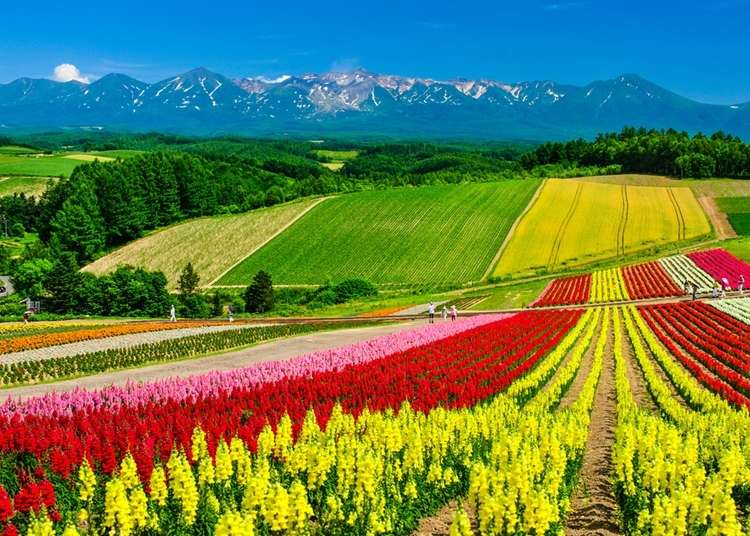
What Kind of Flowers Grow in Hokkaido and When are the Best Times to See Them?
- Written by: Minna no Kotoba Sha
Hokkaido has a wide variety of flowers that grow in fields and gardens, bringing enjoyment from spring to autumn. Some can only be seen in Hokkaido, beckoning flower fans to regions rarely explored.
Here’s an introduction to the flowers that bloom in Hokkaido in each season, including some of the best viewing spots to guide you on your floral journey!
- Table of Contents
-
- Hokkaido’s flower season lasts from April to October!
- Flowers in full bloom in spring (April to May)
- Flowers in full bloom in early summer (June)
- Flowers in full bloom in summer (July-August)
- Flowers in full bloom in autumn (September-October)
- There are still more! Flowers and plants unique to Hokkaido
Hokkaido’s flower season lasts from April to October!

Hokkaido winters are long and severely cold, but magnificent flowers can be seen from when the snow melts in April to October when autumn leaves begin to fall.
The flower season is shorter than that of Honshu, but there are ways to enjoy flowers in Hokkaido that cannot be found in other prefectures.
Many native plants bloom only on remote islands and in unexplored regions. Given Hokkaido’s higher latitude, plants that live in the highlands of Honshu can be seen in lower areas in Hokkaido. Due to lower temperatures throughout the year, some flowers are also seen in different seasons than in Honshu.
The scale of the flower fields is also different, and there are fields all over Hokkaido that fill your entire field of vision.
Here are the flowers that can be seen from spring to autumn, listed by month.
Flowers in full bloom in spring (April to May)
Many early spring days in Hokkaido are still cold, and snow flurries can continue. However, even under such circumstances, some flowers still bloom and announce the arrival of spring.
Plants that bloom only in spring are called “spring ephemerals” because of their fragility and short life cycle, and in late April, cherry blossoms gradually begin to bloom, starting in southern Hokkaido.
Mizubasho (Skunk Cabbage)
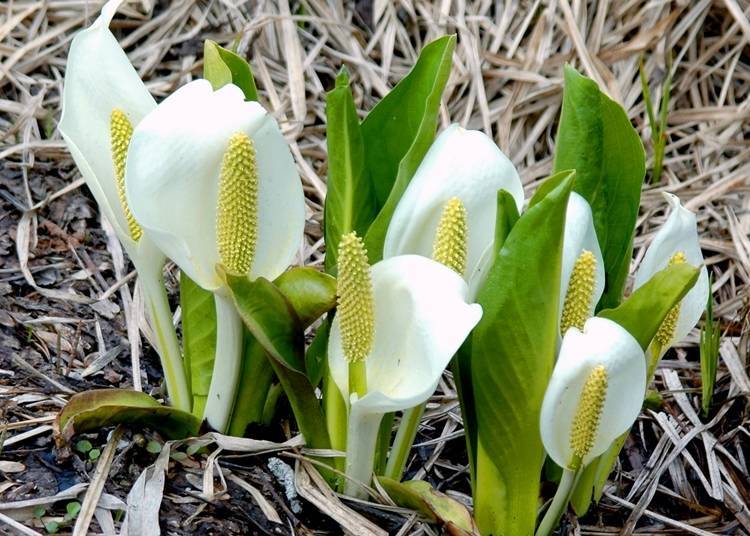
・Best time to see: Mid- to late April
・Main viewing areas: Lake Abashiri (nearest station: JR Yobito Station), Onuma Quasi-National Park (nearest station: JR Onumakoen Station), Makunbetsu Swamp
The white flower-like portion of skunk cabbage is actually a leaf that wraps around a bud. The yellow columnar part in the center is the flower. Along the shores of Lake Abashiri from Abashiri to Memanbetsu, you can see one of Japan’s largest gatherings of skunk cabbage.
●Katakuri (Asian Fawn Lily)

・Best time to see: Late April to early May
・Main viewing areas: Otokoyama Nature Park, Nisekomachi Sakuragaoka Park (nearest station: JR Niseko Station), Urausu Shrine
Asian Fawn Lily is a perennial that grows in mountain forests and blooms only in early spring before retreating underground after summer. The characteristic flower faces downward and has three petals on the inside and three on the outside.
In Honshu, it’s an alpine plant that grows at higher elevations, but can be seen in Hokkaido’s flatlands. In early spring, the grounds of Urausu Shrine are filled with Asian fawn lilies and blue Ezoengosaku (Corydalis).
Many people visit the shrine to take pictures of wild birds, squirrels, and the beautiful flower carpets.
●Sakura (Cherry Blossom)
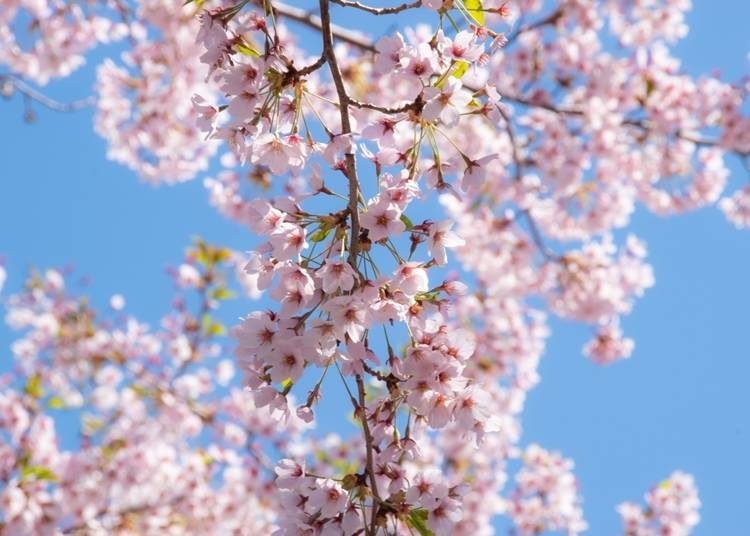
・Main viewing areas and best times to see: Hakodate Park (late April to mid-May) (nearest station: streetcar Aoyagi-cho Station), Goryokaku Park (late April to mid-May) (nearest station: streetcar Goryokaku-Koen-Mae Station), Matsumae Park (late April to mid-May), Nijukken Road Cherry Blossom Trees (early to mid-May), Noboribetsu Cherry Blossom Trees (mid- to late May) (Nearest station: JR Noboribetsu Station), Asahiyama Park (early to mid-May)
Hokkaido is home to a variety of cherry blossoms. The most common is Ezoyamazakura, which has bright pink flowers. The Nijukken Road Cherry Blossom Trees are considered the best in Hokkaido. More than 2,000 trees bloom along the straight road, stretching for about 7 kilometers.
In Hakodate Park and Goryokaku Park in southern Hokkaido, you can see Yoshino cherry trees and an over 300-year-old Matsumae Hayazaki (“Kechimyaku Zakura”) tree still grows in Matsumae Park.
At Asahiyama Park, you can enjoy late-blooming white Kasumizakura, and Nemuro is where you’ll see Japan’s last-blooming Chishimazakura.
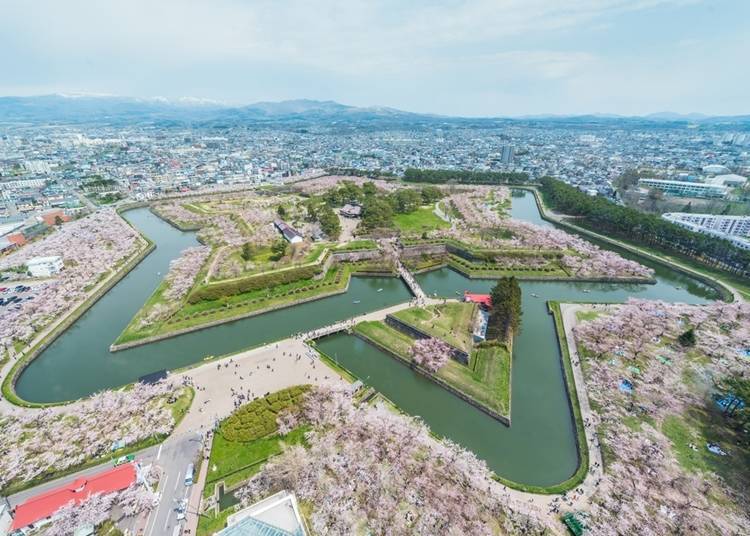
●Suisen (Narcissus)

・Best time to see: Late April to early May
・Main viewing areas: Tamagawa Park, etc.
Narcissus is a fragrant bulbous flower that blooms in early spring when the weather is still snowy. It has a faint, sweet scent and is sometimes used as a natural fragrance in perfumes.
Tamagawa Park, located in Setana-cho, Kudo District, is a famous narcissus spot with about 30 species and, when in full bloom, about 300,000 flowers.
●Tulip

・Main viewing areas and best times to see: Cape Saraki Tulip Garden (late April to May) (Nearest station: JR Izumisawa Station), Kamiyubetsu Tulip Park (mid- to late May), Ueno Farm (May to June)
Colorful tulips bloom in yellow, red, and white, and more. Some have petals with rounded tips, while others have frills. Tulips also come in early, normal, and late blooming varieties. Hokkaido’s tulip fields are very large, and the full, colorful scenery is a natural masterpiece.
(Provided by: Kamiyubetsu Tulip Park)
●Shibazakura (Moss phlox)

・Best time to see: Early May to early June
・Main viewing areas: Higashimokoto Shibazakura Park, Shibazakura Takinoue Park, etc.
Moss phlox produces small pink and white flowers that resemble cherry blossoms. The stems and leaves grow low to the ground, covering it like grass and creating a pink carpet when the flowers bloom. The sight of a huge moss phlox panorama is a spectacular sight.
●Ume (Plum)
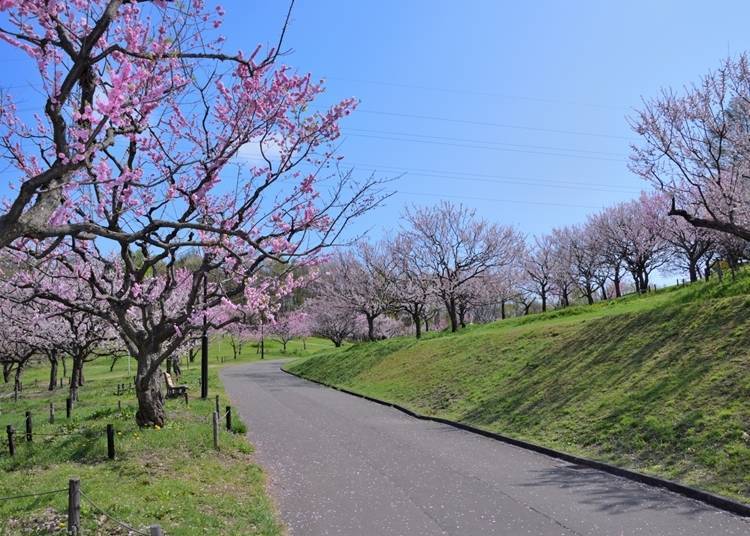
・Best time to see: Early to late May
・Main viewing areas: Hiraoka Park, Mikasa Asuka Plum Forest, etc.
Plum blossoms, along with cherry blossoms, are synonymous with spring in Japan. The thin, short branches have flowers of about 2.5 cm. To the south in Honshu, plum blossoms bloom before cherry blossoms, but in Hokkaido, that order is reversed, with the best plum blossom viewing in May.
●Botan and Shakuyaku (Moutan Peony and Peony)
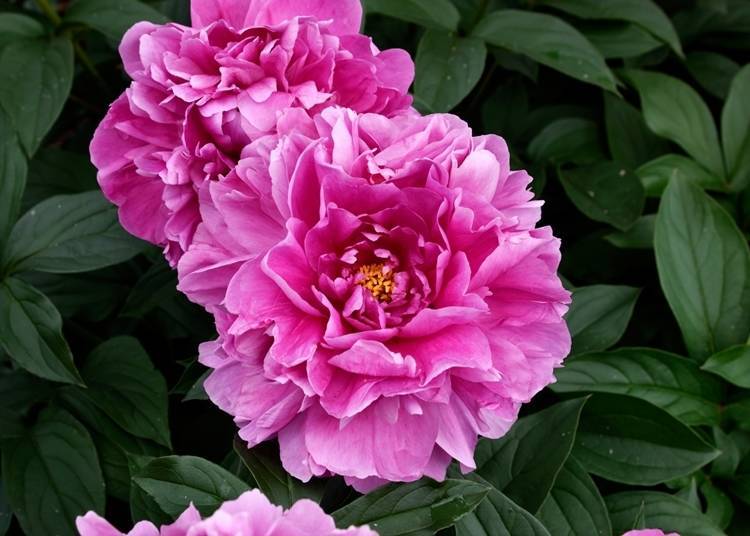
・Best time to see: Late May to mid-June
・Main viewing areas: Herring Goten Otaru VIP Hall (former Aoyama villa), etc.
Both the Moutan peony and peony have large gorgeous flowers of about 10 cm. Peonies are characteristic of a Japanese atmosphere, and in Otaru, a port town that flourished through herring fishing, the flowers can be seen in the gardens of the Herring Goten Otaru VIP Hall.
●Nanohana (Rape Blossom)

・Best time to see: Mid- to late May
・Main viewing areas: Ebeotsucho in Takikawa City, Abira, etc.
Rape blossoms are used in food and to make oil. The tip of the plant’s stem is covered with multiple cross-shaped yellow flowers. Rape blossom fields can be seen in Takikawa City and Abira, where people come to marvel at the fantastic scenery that looks like a yellow carpet. Note that the field is privately owned, so be careful to avoid trespassing.
●Lilac

・Best time to see: Mid-May to early June
・Main viewing areas: Odori Park (nearest station: subway Nanboku Line and Toho Line Odori Station), Kawashimo Park, Soseikawa Park (nearest station: subway Toho Line Hosuisusukino Station)
Lilacs have small, pale purple and white petals and a sweet scent can be used as perfume. A feature of early summer in Sapporo, the lilac was designated as a symbol of Sapporo in 1960. They come into full bloom when the cherry blossom season ends and are often mentioned in seasonal haiku poetry.
Flowers in full bloom in early summer (June)
The temperature in Hokkaido rises notably in June, but it is not as hot and humid as Honshu. In the drier heat, fresh, beautiful flowers bloom in sequence across Hokkaido.
●Hamanasu (Beach Rose)

・Best time to see: Late June to early July
・Main viewing areas: Hamanasunooka Park, etc.
The beach rose is a member of the rose family with large magenta and white flowers. It was selected as the flower of Hokkaido by popular vote on the prefecture’s 110th anniversary. The flowers have a faint scent, and the buds and fruits are sometimes dried and used in tea.
●Fuji (Japanese Wisteria)

・Main viewing areas and best times to see: Tenjinyama Ryokuchi (June) (nearest station: subway Namboku Line Sumikawa Station), Maruseppu Toen (late May to mid-June) (nearest station: JR Maruseppu Station)
Beautiful wisteria flowers have long been popular in Japan with their small, butterfly-shaped flowers that hang downward on long stems.
●Suzuran (Lily of the Valley)

・Best time to see: Late May to June
・Main viewing areas: Biratori Lily Bell Fields, etc.
When in full bloom, the lily of the valley has multiple small, white, bell-shaped flowers that grow from a single stem. The flowers represent early summer in Hokkaido and grow wild in the highlands. The Biratori Lily Bell Fields colony in Biratori is the best in Japan with an area of about 150,000 square meters.
●Tsutsuji (Azalea)
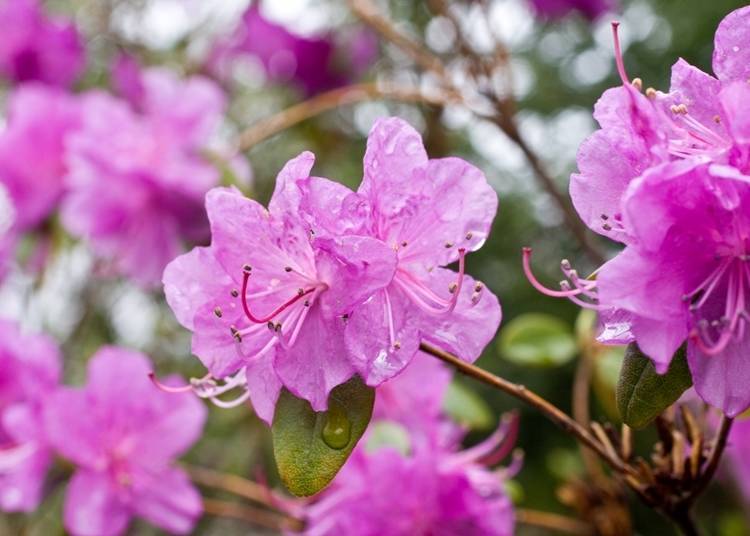
・Best time to see: April to June
・Main viewing areas: Esantsutsuji Park (mid-May to early June), Onneyu Onsen Tsutsuji Park (early to mid-May), etc.
Generally, azaleas start to bloom when cherry blossoms finish blooming, and the best time to see them is from late spring to early summer, but the Ezomurasaki azaleas that grow wild in Hokkaido bloom before the cherry blossoms.
At Onneyu Onsen Azalea Park in Rubeshibecho, Kitami City, you can see 280,000 Ezomurasaki azaleas, which are designated as one of Hokkaido’s natural monuments.
●Bara (Rose)

・Main viewing areas and best times to see: Odori Park (late June to September) (nearest station: subway Tozai Line Nishi-Juitchome Station) / Iwamizawa Park Rose Garden (mid-June to mid-October)
Hokkaido’s colorful roses are red, pink, yellow, and white and the shape and number of petals and scent vary depending on the type. The flowers can be enjoyed in parks throughout Hokkaido and many grow in the 12-chome of Sapporo’s Odori Park, giving the area a beautiful fragrance.
●Linaria (Toadflax)

・Best time to see: late June
・Main viewing areas: Yuni Garden (nearest station: JR Yuni Station), etc.
Toadflax has many small pastel-colored flowers on its slender stems. If you take a closer look, you’ll notice that two differently-shaped flowers grow from one stem. In Yuni Garden, there’s a toadflax area called “Linaria-no-Oka,” and when in full bloom, there are 1.02 million flowers.
●Ezokanzo (Zenteika)
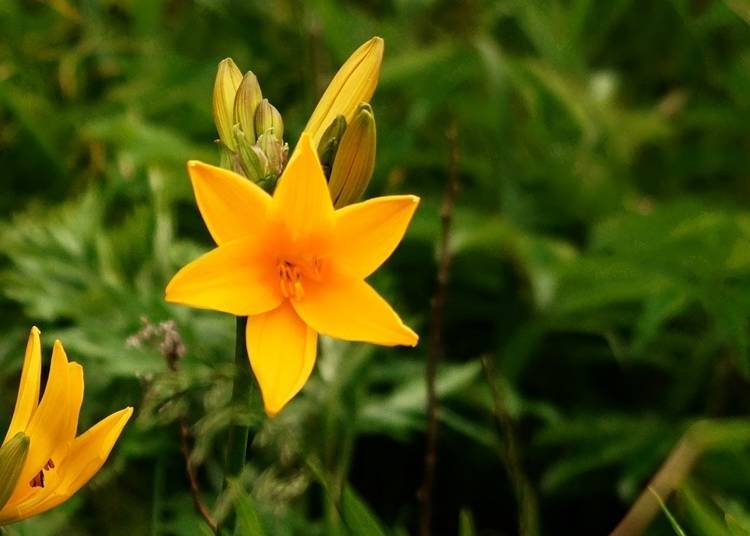
・Best time to see: Late June to early July
・Main viewing areas: Sarobetsu Wetland area, Notsuke Peninsula Wild Flower Garden
Ezokanzo is a perennial that grows in wetlands and coastal grasslands. Its flowers have a diameter of 7 to 8 cm that resemble lilies. The flowers open in the morning and close in the evening, and like other flowers that live in the highlands of Honshu, they can be seen in Hokkaido’s lower elevations.
●Ayame (Japanese Iris)

・Best time to see: Late June to early July
・Main viewing areas: Wild Flower Garden Ayamegaoka, etc.
The Japanese iris is a purple- and white-flowered perennial has been popular in Japan for a long time. At Ayamegaoka Wild Flower Garden, about 300,000 irises grow on a 100-square-meter site. The garden is also home to more than 100 kinds of plants.
Flowers in full bloom in summer (July-August)
When summer arrives, flowers grow rapidly. In Hokuryu’s sunflower field, the large yellow flowers bloom and fill the field as if to enjoy the summer weather.
●Ezokisuge (Yellow Daylily)
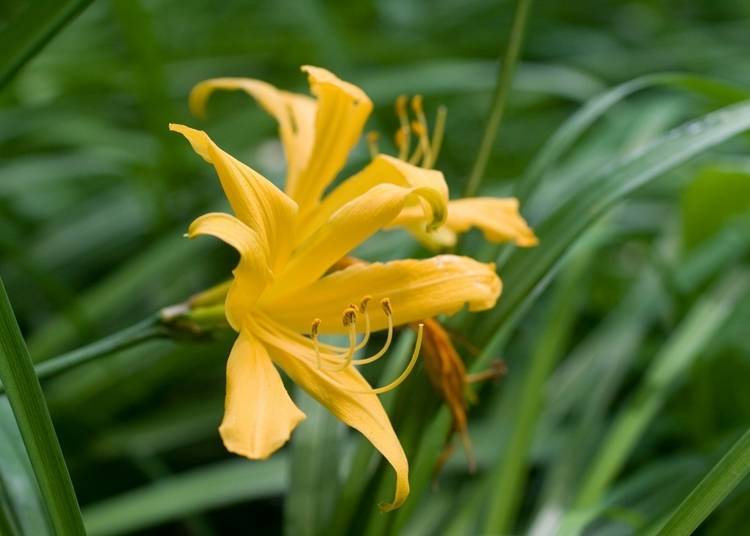
・Best time to see: Mid-July
・Main viewing areas: Koshimizu Wild Flower Garden (nearest station: JR Genseikaen Station)
Yellow daylilies are characterized by two curved, elongated stamens. Ezokanzo, which also resembles a lily, bloom in the morning, while Ezokisuge bloom in the evening and close in the afternoon the following day. It is an alpine plant in Honshu, but can be seen in the flatlands in Hokkaido.
●Lily
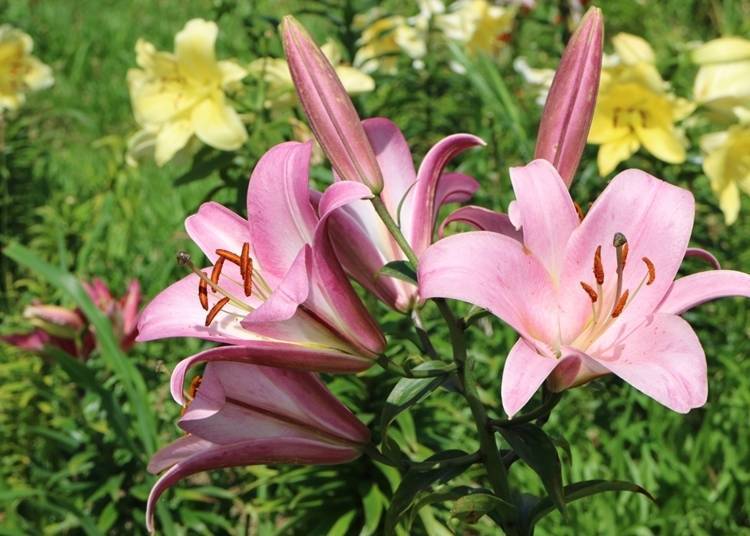
・Main viewing areas and best times to see: Yurigahara Park (June to mid-August) (nearest station: JR Yurigahara), Yuni Garden (late July) (nearest station: JR Yuni Station)
Bulbous plants, lily stems grow straight and have large, fragrant flowers at the tip. The flowers vary in color from white to yellow to pink.
●Lavender

・Main viewing areas and best times to see: Hinode Lavender Garden (late June to early August), Makomanai Takino Cemetery (around July) (nearest station: JR Kami-Furano Station), Farm Tomita (mid- to late July) (Nearest station: JR Naka-Furano Station)
Lavender is a type of herb that produces bright purple flowers. The elegant scent has a relaxing effect, and the plant has been called “the queen of herbs.” Furano’s lavender fields are especially famous.
●Ajisai (Hydrangea)

・Best time to see: Early July to mid-August
・Main viewing areas: Herring Goten Otaru VIP Hall (former Aoyama villa), etc.
Hydrangeas are native to Japan, with small purple, blue, and pink that grow in large flowerheads. It is said that the flower color changes depending on the acidity of the soil. June is the best time to see hydrangeas in Honshu, but in Hokkaido they bloom in summer.
●Himawari (Sunflower)
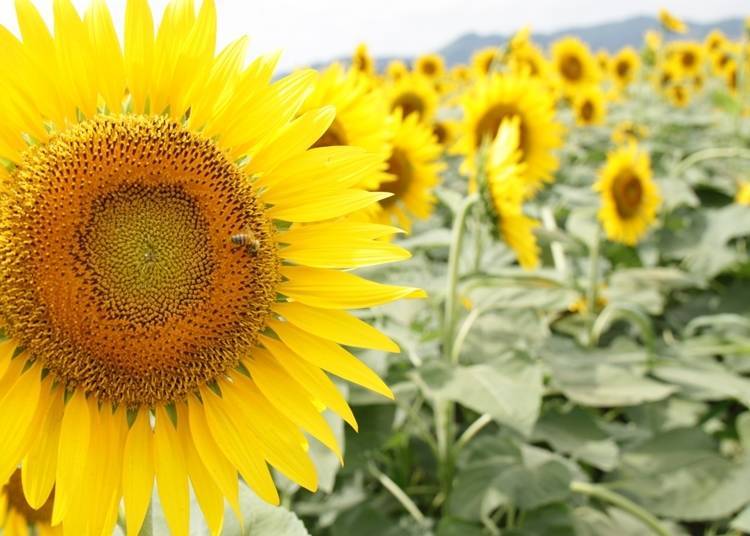
・Main viewing areas and best times to see: Hokuryu Sunflower Village (mid-July to around the third week of August) / Ozoramachi Sunflower Field (late July to early October) / Nayoro Sunflower Field (early to late August)
Big yellow sunflowers have a diameter of 20 to 30 cm. In Hokkaido, they are often planted for soil improvement and their seeds are roasted for eating or processed for oil. The sunflower fields in Hokkaido are huge, and the panorama of flowers fills the view.
Flowers in full bloom in autumn (September-October)
Autumn leaves arrive in September in Hokkaido. At Daisetsuzan, which is said to have the earliest autumn colors in Japan, leaves near the summit begin to change color in late August. In contrast, the types of flowers that can be seen gradually decrease.
●Cosmos

・Main viewing areas and best times to see: Taiyonookaengaru Park Cosmos Garden (mid-August to late September) (nearest station: JR Engaru Station), Cosmos Garden (September to early October) (nearest station: JR Engaru Station), Takino Suzuran Hillside Park (September to early October) (nearest station: JR Engaru Station)
Cosmos are in full bloom from August to September, and come in pink, red, and white varieties. In Honshu, the best time to see cosmos is from September to October, but in Hokkaido, they bloom a little earlier, and bring with them the feeling of autumn’s arrival.
There are still more! Flowers and plants unique to Hokkaido
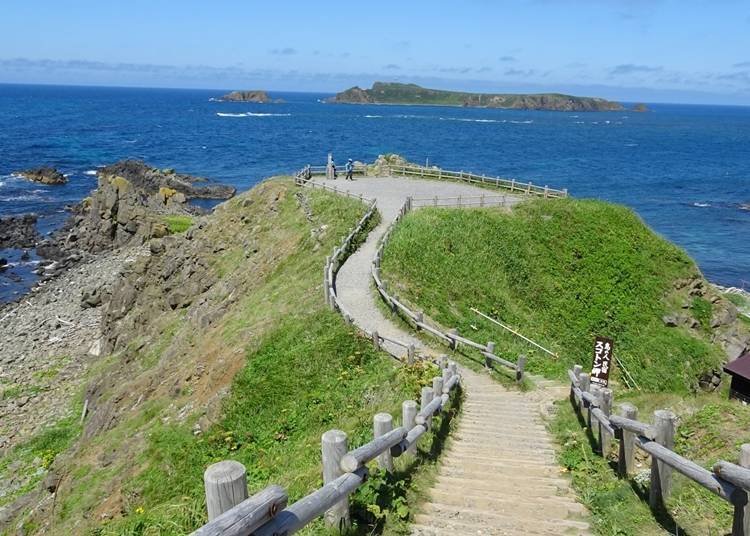
Rebun Island, located in the northern part of Hokkaido, is a natural treasure trove of rare alpine plants. Many plants native to the island grow wild, and about 300 species of flowers such as Rebun Lady’s Slipper and Rebun Shiogama give it the name “Floating Island of Flowers.” Rebun Island can be reached by ferry operating from Wakkanai Port Ferry Terminal.
●Rebun Atsumorisou (Rebun Lady’s Slipper)

・Best time to see: Late May to early June
The Rebun Lady’s Slipper is native to Rebun Island. It is a variety of Cypripedium macranthos, which has purple flowers, but the Rebun variety has white or pale cream-colored flowers.
●Rebun Shiogama

・Best time to see: Mid-June to late July
Large yotsuba shiogama is endemic to Rebun Island and has 5 to 6 flowers. Rebun shiogama is a type of yotsuba shiogama with 10 or more tiers of flowers.
●Akkeshiso (Common glasswort)
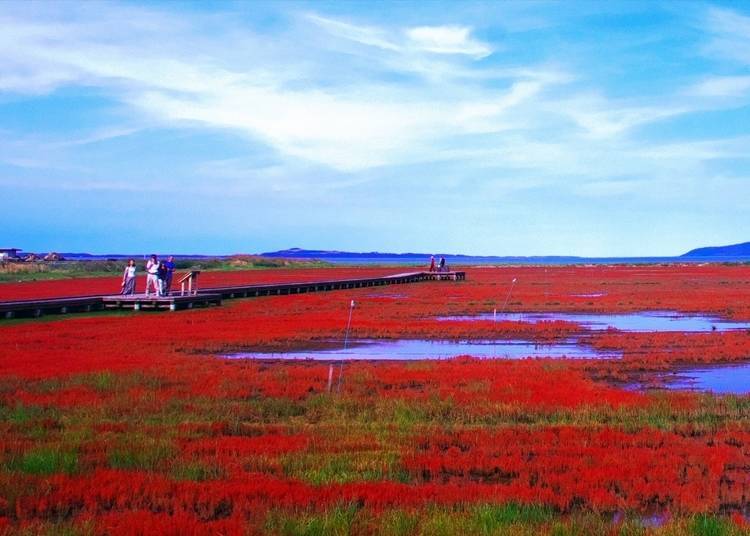
In the Okhotsk region, you can see common glasswort that colors the lakeside bright red in autumn. It is an annual plant with no flowers and while they are green in summer, the plants turn red in autumn and are commonly called “coral grass” due to their coral-like color.
Lake Notoro near Abashiri has the largest concentration of common glasswort in Japan, and many tourists visit around September when the color is at its best.
●Shiretoko Sumire (Viola Kitamiana)
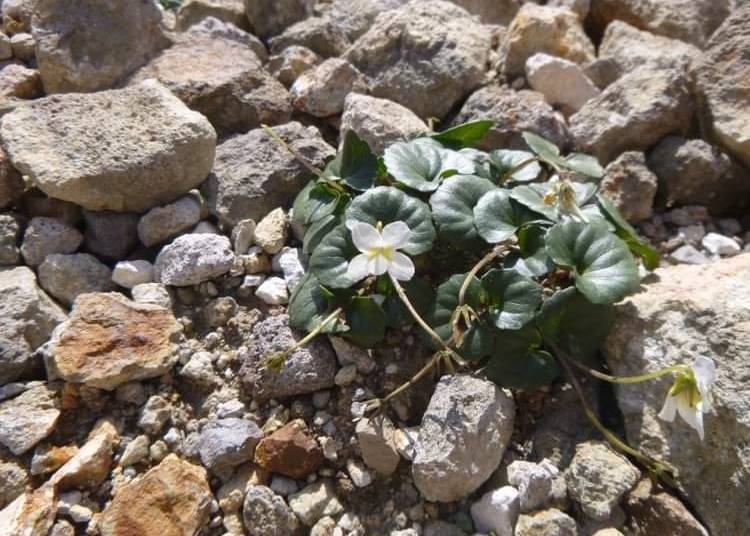
Viola kitamiana can only be found on the Shiretoko Peninsula and Iturup Island. The leaves are thick and shiny, with small white flowers and they grow in rocky areas. The best time to see viola kitamiana is from June to July.
Text by: Minna-no-Kotobasha
*Information accurate as of March 2021. Please check official websites for latest information.
Minna no Kotoba Sha is a production company founded by an editor with extensive experience in editing local magazines in Sapporo. For over 20 years, our team has conducted research and written articles across Hokkaido, with Sapporo as our primary hub. Our diverse portfolio includes the production of various books such as travel guides, informational magazines, and collections showcasing the picturesque landscapes of Hokkaido. Comprised entirely of women, the team at Minna no Kotoba Sha boasts diverse interests, including a passion for travel, culinary delights, and alcoholic beverages. The scope of our communication efforts spans a wide range, covering everything from introducing notable restaurants to providing coverage of local events and sharing stories of leisure experiences.
- Area
- Category
*Prices and options mentioned are subject to change.
*Unless stated otherwise, all prices include tax.
Popular Tours & Activitiess
Recommended places for you
-
Appealing

Otaru Canal
Rivers, Lakes & Canyons
Otaru
-
Appealing

Rukku and Uohei
Izakaya
Sapporo / Chitose
-
Appealing

Shiroi Koibito Park
Theme Parks
Sapporo / Chitose
-
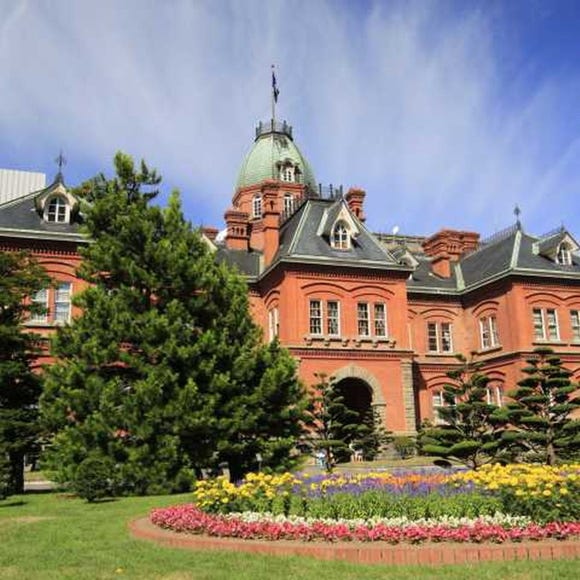
Former Hokkaido Government Office Building (Red Brick Office)
Other Historic Sites
Sapporo / Chitose
-
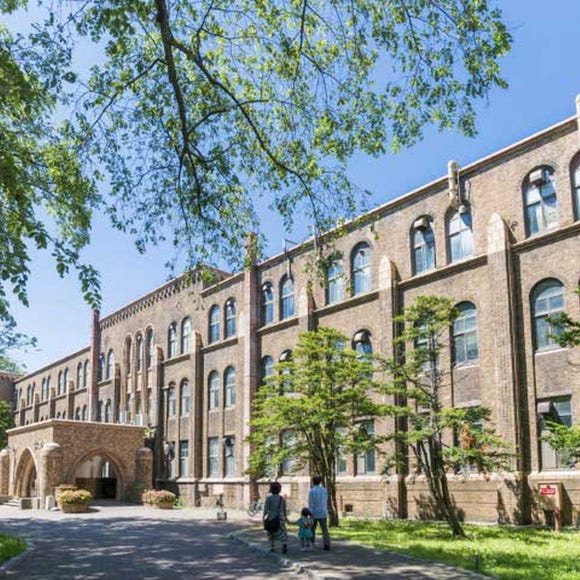
Hokkaido University
Other Architecture
Sapporo / Chitose
-

Sapporo Clock Tower
Landmarks
Sapporo / Chitose
-

Beyond Hakodate and Matsumae: Enjoy the Hidden Gems of Hokkaido’s Donan Area
-

7 Iconic Hokkaido locations that will make your Instagram shine
by: Himanshi Shah
-

Great Local Eats: 5 Expert-Recommended Local Chain Restaurants in Hakodate
by: Nobuka Kawashima
-
Ad

Cycling Through Hokkaido: Discover the Beauty of Memuro and the Tokachi Plains
-

Scenic Road Trip from Hakodate to Matsumae: Stunning Views, Traditions, and Tasty Delights
by: Nobuka Kawashima
-
Ad

Sapporo SATUDORA Shopping Guide: Get Souvenirs, Medicine & More at This Iconic Drugstore (Special Deal Inside!)
-

Visiting Farm Tomita: The Breathtaking Hokkaido Lavender Fields You Must See in Summer
-

10 Important Japanese Phrases to Know Before You Enter a Japanese Convenience Store!
by: Teni Wada
-

A Local's Guide to Driving in Hokkaido: Road Trip Tips & Suggested Itineraries
by: Hide
-

Top 5 Things to Do in Hokkaido's Biei and Furano Area: Shirogane Blue Pond, Lavender Fields, And More!
-

6 Surprisingly Cheap Things in Japan
-

Hokkaido Destinations: 5 Things That Amazed Visitors About Hokkaido’s Otherworldly Natural Beauty
- #best sushi hokkaido
- #things to do hokkaido
- #best ramen sapporo
- #what to bring to japan
- #new years in tokyo
- #what to buy in ameyoko
- #japanese nail trends
- #what to do in odaiba
- #onsen tattoo friendly tokyo
- #daiso
- #best sweets otaru
- #japanese fashion culture
- #best nature furano
- #japanese convenience store snacks
- #best japanese soft drinks
















